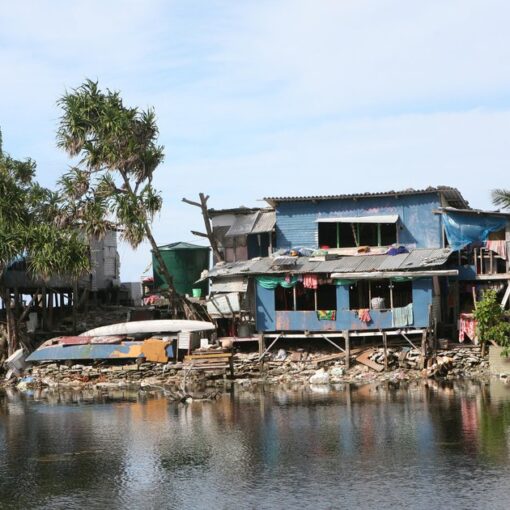On October 21, 2022, the U.S. Environmental Protection Agency (USEPA) released a request for information (RFI) regarding Section 60103 of the Inflation Reduction Act (IRA), also known as the IRA’s “green bank” provisions. These provisions add a new section 134 to the Clean Air Act establishing a $27 billion Greenhouse Gas Reduction Fund (GGRF) grant program, which will seed what are commonly referred to as “green banks” (entities that leverage public funding to attract private funding and advance green energy or energy efficiency projects). The USEPA’s request for information seeks stakeholder input on a variety of questions relating to making GGRF grants. The RFI is one of the first formal actions undertaken by a federal agency in connection with IRA implementation. Cities and other forms of local government have an interest in GGRF program design, both as eligible recipients for some of the GGRF funding and as catalysts for green bank investment in their communities.
To review, the GGRF provisions of the IRA appropriate three distinct pots of funding. A $7 billion appropriation will cover “grants, loans, or other forms of financial assistance, as well as technical assistance, to enable low-income and disadvantaged communities to deploy or benefit from zero-emission technologies, including distributed technologies on residential rooftops, and to carry out other greenhouse gas emission reduction activities.” These grants may be made to States, municipalities, Tribal governments, and nonprofit organizations that are “designed to provide capital, leverage private capital, and provide other forms of financial assistance for the rapid deployment of low- and zero-emission products, technologies, and services” (in other words, to act as green banks). A separate $12 billion appropriation will be used to support direct and indirect investments in projects that “reduce[] or avoid[] greenhouse gas emissions and other forms of air pollution in partnership with, and by leveraging investment from, the private sector; or assist[] communities in the efforts of those communities to reduce or avoid greenhouse gas emissions and other forms of air pollution.” A third appropriation of $8 billion may be used for the same activities as the $12 billion fund, but only in low-income and disadvantaged communities.” These latter two pots of funding are available only to the nonprofit organizations designed to act as green banks.
The IRA gives USEPA significant discretion in how to disburse the GGRF funds, and it is not yet clear how the green bank model will work. While several state and local green banks exist already, the scale of the GGRF funding dwarfs that of those existing banks, which loan to relatively few projects (and many areas of the country are not served by a green bank at all). With respect to the IRA’s green bank provisions, many questions remain, from who will receive the funding and act as the green bank (e.g., will there be a few or many such banks nationally?) to what constitutes a “disadvantaged community.”
The RFI appears intended to help USEPA sort through some of these questions. The RFI lists six areas for more specific comments, each of which may be of interest to local governments.
- Low-Income and Disadvantaged Communities. Section 1 asks for input on defining and offering technical and financial assistance to low-income and disadvantaged communities. The term “disadvantaged communities” is undefined for the purposes of the IRA’s GGRF provisions (it is very vaguely defined in an IRA section about Department of Energy rebate programs). USEPA will therefore have to set a definition and/or screening criteria. Efforts to develop definitions along these lines have generally encountered significant stakeholder input and, often, some degree of dissatisfaction with the results. A natural place for USEPA to start in developing criteria to define these terms for GGRF purposes would be the guidance developed in connection with the Biden administration’s Justice40 initiative, which pledges that forty percent of the “overall benefits” of certain federal climate, clean energy, housing, and other investments should “flow to disadvantaged communities.” An online screening tool (still in “beta”) identifies areas designated “disadvantaged” for Justice40 purposes; it takes into account factors including climate impacts, health disparities, energy and housing cost burden, vehicle pollution exposure, legacy pollution, and more. The Justice40 criteria have received some negative attention for their failure to incorporate the racial make-up of an area as a criteria. Non-white communities are well-documented as overburdened by pollution and other forms of environmental injustice, but efforts to direct federal funding to areas on the basis of their racial makeup face an extremely high, though not insurmountable, burden to survive challenges in court. The result is that disadvantaged community definitions and screening tools developed for the purposes of allocating governmental benefits often limit or omit use of race as a criteria, even though in many places race is an important indicator of need. That said, definitions, screening tools, and related criteria can lawfully consider race, even if doing so is complicated. For example, New York State’s draft Disadvantaged Communities Criteria include race and ethnicity factors among 45 total indicators that screen census tracts for disadvantaged community status. Local governments that wish to see an emphasis on race in designating disadvantaged communities should say so in their comments. In addition to these definitional questions, Section 1 asks about needed technical and financial assistance to help low-income and disadvantaged communities, and businesses owned by members of low-income and disadvantaged communities, participate in the GGRF program.
- Program Design. Underscoring USEPA’s discretion with respect to the GGRF, and highlighting the significant open questions about how green banks will work in practice, Section 2 poses eleven questions about various aspects of GGRF program design. In particular, USEPA expresses interest in program design elements intended to ensure “high private-sector leverage (i.e., each dollar of federal funding mobilizes additional private funding)”, additionality “(i.e, federal funding invests in projects that would have otherwise lacked access to financing),” and ability to “recycle” grant funds from one project to the next, ensuring a green bank’s long-term viability. In addition, the RFI asks about program design elements meant to “create high quality jobs and adhere to best practices for labor standards” and that encourage “domestic procurement of” construction materials, two items that local governments may consider important to their local economies. The RFI also asks about program aspects meant to help grantees and other funding recipients comply with the requirements of Title VI of the Civil Rights Act, which prohibits discrimination by federal programs on the basis of race, color, and national origin. Local governments may wish to consider how they would best be served by program guardrails to help with Title VI compliance, on the one hand, and an imperative to direct resources to disadvantaged communities, on the other. USEPA also solicits input about other programs – whether federal, state, or local, that might serve as a model or provide other guidance for GGRF programs.
- Eligible Projects. While the definition of GGRF-“qualified projects” is set in the IRA’s statutory language as “any project, activity, or technology that (A) reduces or avoids greenhouse gas emissions and other forms of air pollution in partnership with, and by leveraging private investment from, the private sector; or (B) assists communities in [their] efforts to… reduce or avoid greenhouse gas emissions and other forms of air pollution,” Section 3 of the RFI asks how to prioritize these projects. Factors USEPA notes as of interest in its prioritization are maximization of GHG and air pollution reductions; benefits to low-income and disadvantaged communities; investment in projects that lack other funding sources; likelihood of recycling funding to ensure continued viability of green bank-type entities; and facilitating private sector investment. Local governments may have different views about the kinds of projects they would like to see prioritized, but there are likely areas of commonality. For example, local governments around the country will rely on both utility scale and distributed energy projects to meet their climate and clean energy goals, and some may be able to identify the kinds of such projects that would serve their communities but that are encountering financing hurdles. Distributed rooftop solar, for instance, can be difficult to finance because of its decentralization, but it will be critical to local decarbonization efforts. In addition, municipalities are particularly poised to comment on projects that would serve low-income and disadvantaged communities and that would benefit from the funding green banks can provide. Local governments might also advocate for the consideration of projects that would fill gaps in their own efforts to reduce greenhouse gas emissions or scale up renewable energy as one of the prioritization factors. In addition to these prioritization questions, the RFI asks about financial and technical assistance needs in connection with enabling high-priority projects to access funding.
- Eligible Recipients. Section 4 asks commenters who could or should receive GGRF funds. There are two broad pieces to this question: the “eligible entities” (i.e., the green bank or green bank-like entity) and the indirect recipients of funding. Local governments may have input with respect to both. Local governments with the capacity to form or partner with a new or existing green bank will want to provide feedback consistent with the structure of the relevant entity, whether a nonprofit organization, public-private partnership, community development financial institution (CDFI), or otherwise. Those without such capacity or plans to form a local green bank may similarly want to comment on the preferred structure of such an entity, including preferences as to whether there might be one or more, whether one might be local, regional, or national, what mandate such an entity might have, and whether the local government will play a role. In particular, the RFI asks how or what kind of entity could enable GGRF funds to support “projects in low-income and disadvantaged communities” and “in communities where capacity to finance and deploy such projects does not currently exist, and how to “ensure the responsible implementation of… grants by new entities without a track record,” which is particularly relevant in the many areas of the country not already served by a green bank. In addition to asking, essentially, who should be a green bank?, Section 4 asks who should receive funding for projects? Local governments may wish to affirm in their comments that local government entities should themselves be able to access funding from a green bank, as well as to suggest ways that might ensure community groups and others who will complete projects in low-income and disadvantaged communities can receive funding (such as by using measures of establishing individual creditworthiness other than FICO credit scores).
- Oversight and Reporting. Section 5 will inform the rules applicable to green banks and borrowers to promote accountability and track effectiveness of GGRF funds. Questions pertain to governance structures, reporting and audit requirements, oversight, and the metrics and indicators used to track funding use and effectiveness. While local governments will not necessarily have expertise in this area, they can highlight criteria they wish to see in place to ensure that funds allocated within their communities are spent appropriately (i.e, the “community accountability”) component of Section 5 questions. Moreover, local governments may have insights on the types of reporting requirements that could be overly burdensome to smaller recipients of funding, including those from low-income and minority communities.
- General Comments. Section 6 asks simply if commenters “have any other comments on the implementation of the Greenhouse Gas Reduction Fund.”
While commenting on the structure of a financial institution may seem beyond many local officials’ comfort zones, local governments have relevant expertise in the needs of their communities, the gaps in their capacity to reduce greenhouse gas emissions and other air pollution, and how to direct resources to areas of highest impact. Local officials are more familiar than anyone with how their governments work: what requirements, criteria, and oversight they need and what they can handle. Moreover, local governments are well-equipped to voice the concerns of their residents (though they should not be the only ones to do so). Coalitions of local governments could also consider submitting joint comments to increase their impact. The green banks established or funded through the GGRF will dramatically change the funding options and opportunities for renewable energy, energy efficiency, and other GHG-reducing projects and will reverberate through communities nationwide. Local governments should seize the opportunity to shape them.
Local governments can provide input in a variety of ways. Public comments may be submitted on the RFI’s docket until December 5, 2022. In addition, USEPA will hold listening sessions in early November, during which commenters may speak for three minutes and for which registration is available on the GGRF web page. USEPA has also solicited input from the agency’s Environmental Finance Advisory Board (EFAB), which includes, among other public- and private-sector members, several local government officials. EFAB is to provide its recommendations in December.
Amy Turner is the Director of the Cities Climate Law Initiative at the Sabin Center for Climate Change Law at Columbia Law School.





